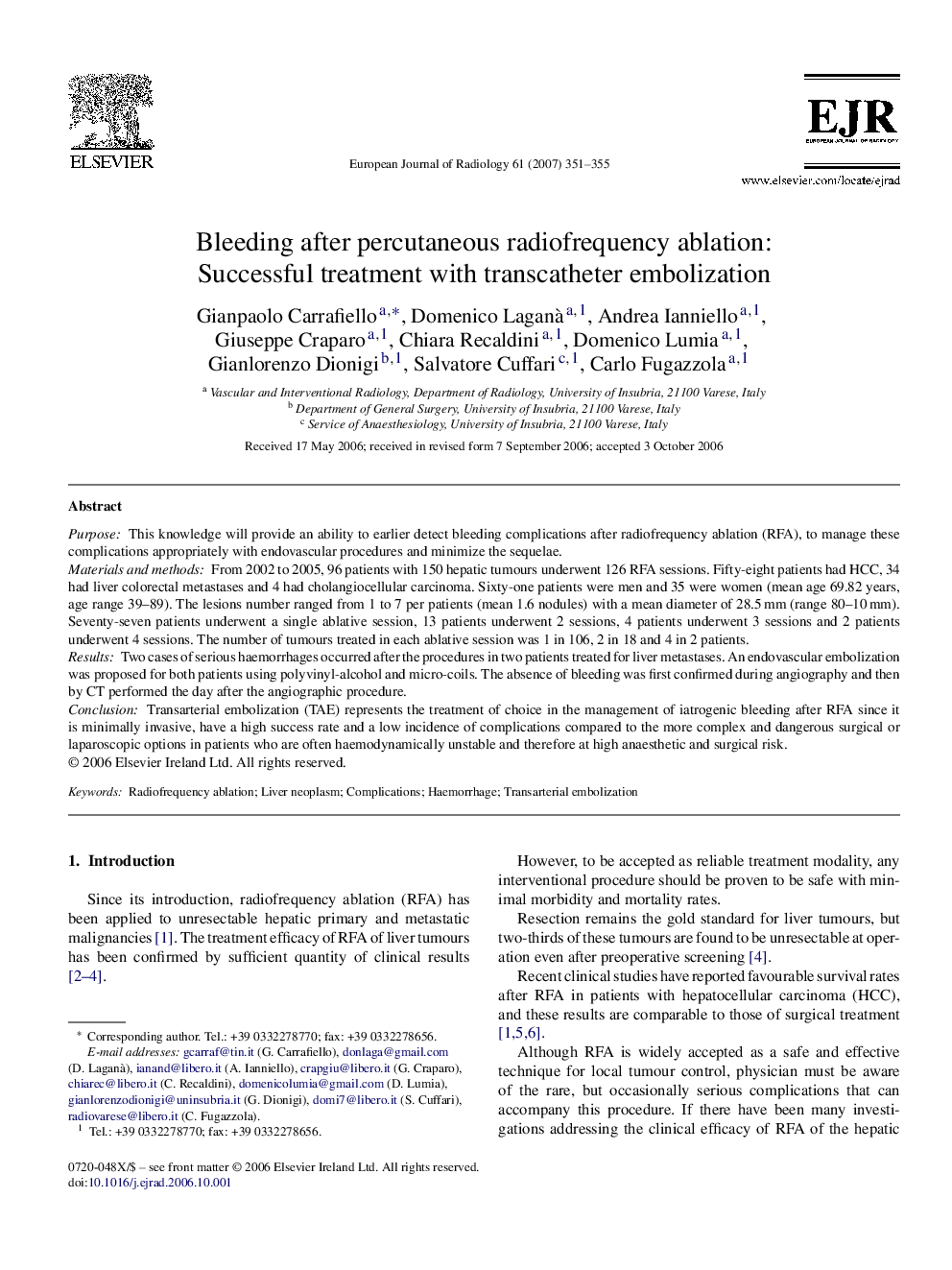| Article ID | Journal | Published Year | Pages | File Type |
|---|---|---|---|---|
| 4228293 | European Journal of Radiology | 2007 | 5 Pages |
PurposeThis knowledge will provide an ability to earlier detect bleeding complications after radiofrequency ablation (RFA), to manage these complications appropriately with endovascular procedures and minimize the sequelae.Materials and methodsFrom 2002 to 2005, 96 patients with 150 hepatic tumours underwent 126 RFA sessions. Fifty-eight patients had HCC, 34 had liver colorectal metastases and 4 had cholangiocellular carcinoma. Sixty-one patients were men and 35 were women (mean age 69.82 years, age range 39–89). The lesions number ranged from 1 to 7 per patients (mean 1.6 nodules) with a mean diameter of 28.5 mm (range 80–10 mm). Seventy-seven patients underwent a single ablative session, 13 patients underwent 2 sessions, 4 patients underwent 3 sessions and 2 patients underwent 4 sessions. The number of tumours treated in each ablative session was 1 in 106, 2 in 18 and 4 in 2 patients.ResultsTwo cases of serious haemorrhages occurred after the procedures in two patients treated for liver metastases. An endovascular embolization was proposed for both patients using polyvinyl-alcohol and micro-coils. The absence of bleeding was first confirmed during angiography and then by CT performed the day after the angiographic procedure.ConclusionTransarterial embolization (TAE) represents the treatment of choice in the management of iatrogenic bleeding after RFA since it is minimally invasive, have a high success rate and a low incidence of complications compared to the more complex and dangerous surgical or laparoscopic options in patients who are often haemodynamically unstable and therefore at high anaesthetic and surgical risk.
